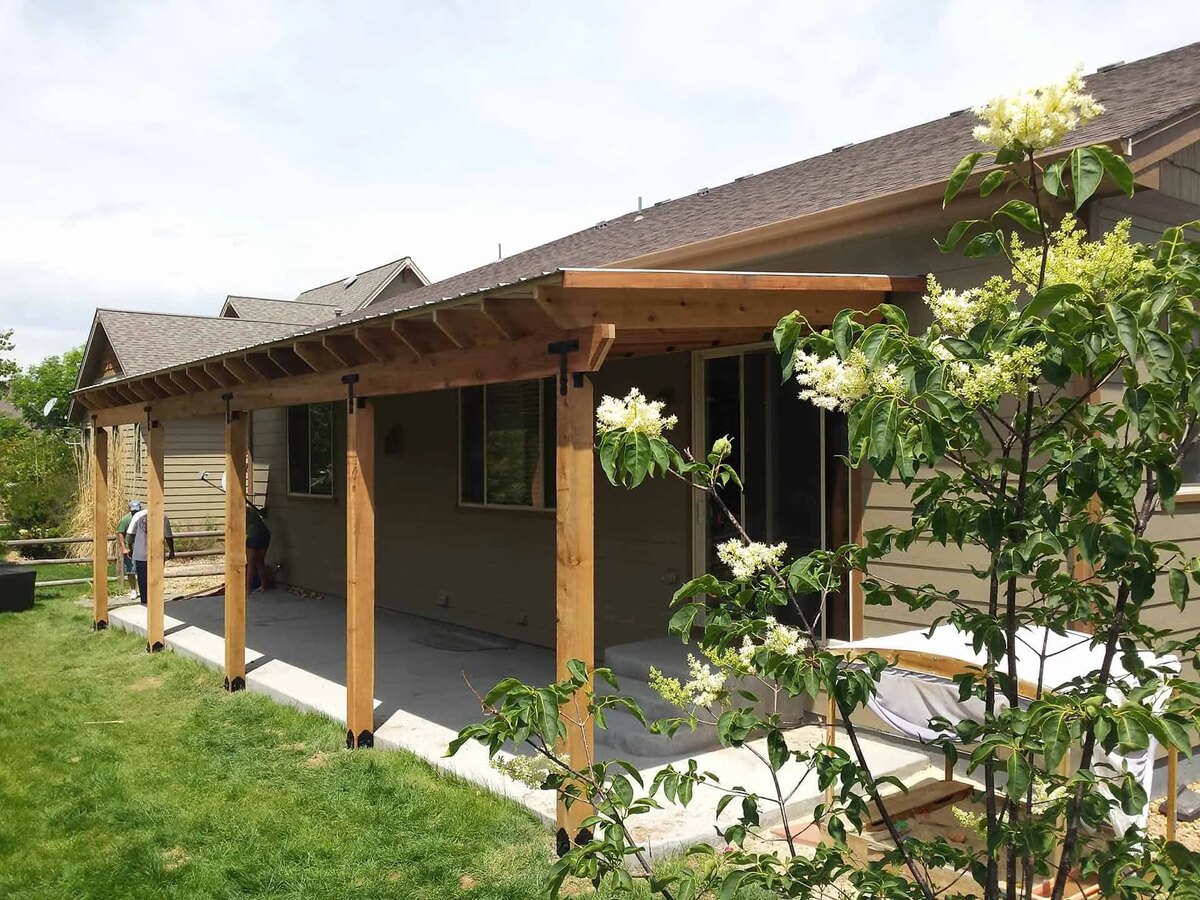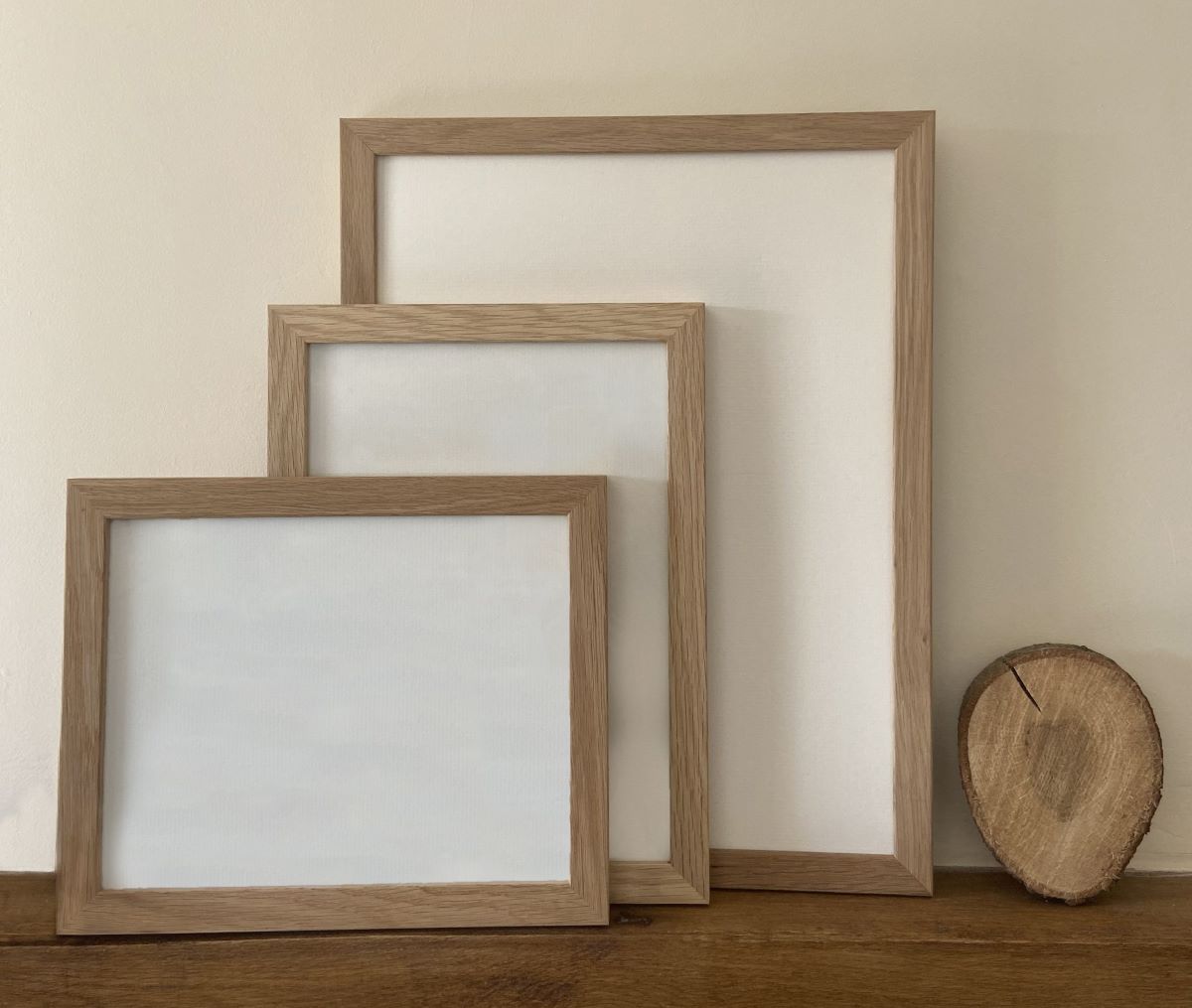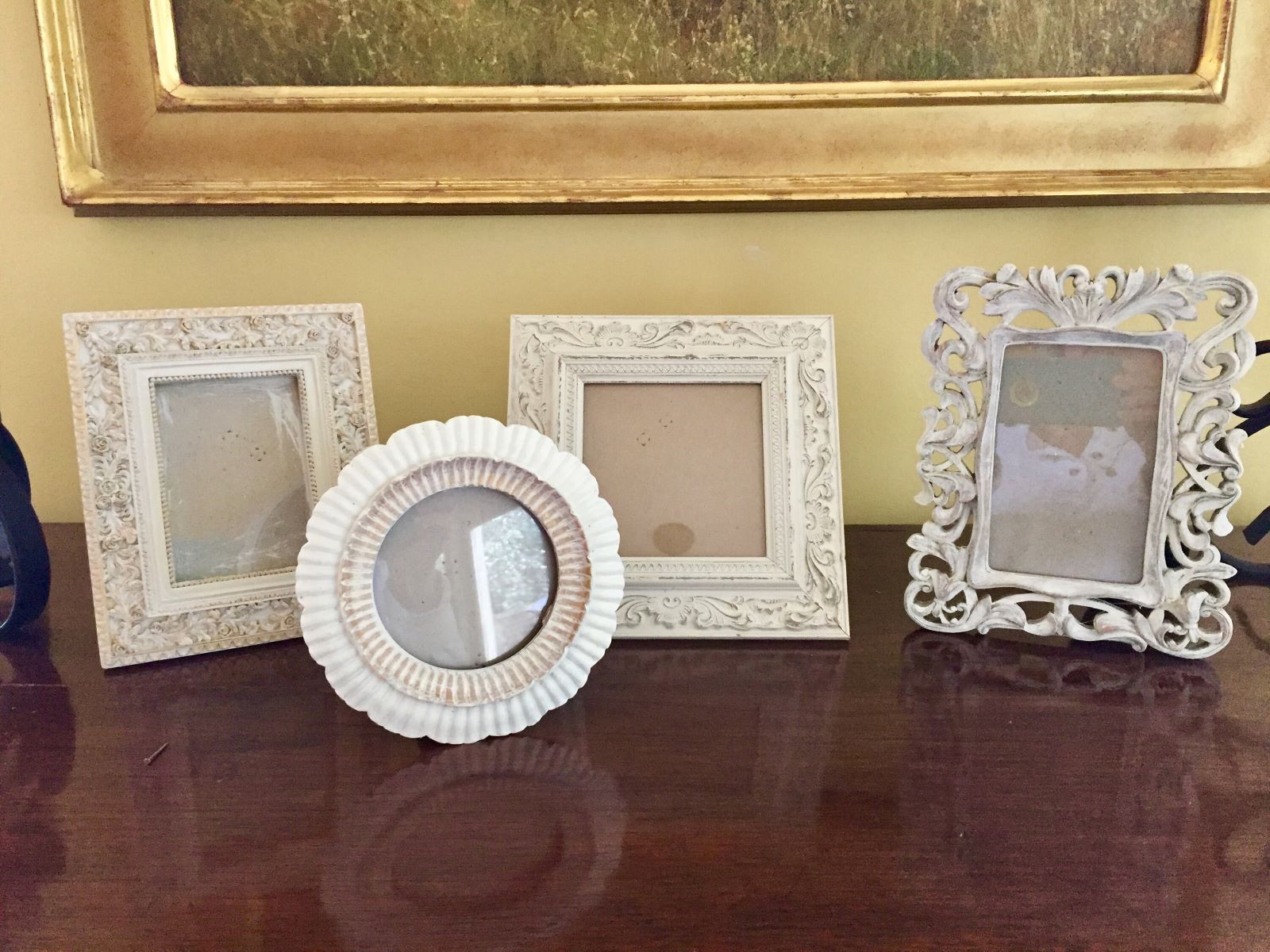

Articles
How Far Apart Should Picture Frames Be
Modified: August 27, 2024
Learn how to properly space picture frames in this informative article. Discover the ideal distance between frames to create a visually appealing display.
(Many of the links in this article redirect to a specific reviewed product. Your purchase of these products through affiliate links helps to generate commission for Storables.com, at no extra cost. Learn more)
Introduction
Picture frames add a touch of elegance and personality to any space. Whether you’re displaying family photos, cherished artwork, or a collection of vintage posters, how you hang and space your picture frames can make a significant impact on the overall aesthetic. But how far apart should picture frames be?
When it comes to determining the ideal spacing between picture frames, there are several factors to consider. These factors include the size and shape of the frames, the type of wall, the purpose of the display, and personal preference. In this article, we will explore the various considerations and provide you with standard guidelines and alternative spacing options to help you achieve the desired look.
One of the primary factors to consider is the size and shape of the picture frames. Large frames tend to require more spacing than smaller frames to avoid a cluttered look. Similarly, rectangular frames may need more space between them compared to square or circular frames. Additionally, taking into account the content of the frames is essential; if each frame has a lot of detail or busy artwork, more spacing might be needed to give each frame the opportunity to stand out.
The type of wall surface also plays a role in determining the spacing between picture frames. If you have a textured or patterned wall, it may be necessary to increase the spacing to prevent the frames from visually merging with the wall. On the other hand, if you have a large empty wall space, you may want to cluster the frames closer together to create a visually impactful gallery wall.
The purpose of the display is another significant consideration. If you’re arranging picture frames to create a cohesive and organized collection, you might opt for a more standardized spacing. However, if you’re aiming for a more eclectic and artistic arrangement, you may prefer varying the spacing between frames to create visual interest.
Now, let’s delve into the standard spacing guidelines for picture frame arrangements. These guidelines serve as a useful starting point, but feel free to adapt them to suit your specific needs and preferences.
Key Takeaways:
- Consider the size, shape, and content of frames, as well as the wall type and purpose of the display when spacing picture frames. Experiment with standard and alternative spacing options to create a visually dynamic and personalized arrangement.
- When hanging picture frames in groups or creating a gallery wall, plan the arrangement, mix sizes and styles, and consider a theme to tell a story. Regularly update and refresh the display to reflect evolving tastes and memories.
Read more: How Far Apart Should Bookshelves Be
Factors to Consider
When determining the spacing between picture frames, there are several factors to take into account. These factors will help you create a visually pleasing display that suits your space and personal style. Let’s explore them in more detail:
Size and Shape of Frames:
The size and shape of the frames play a significant role in determining the spacing between them. Generally, larger frames tend to require more space between each other to avoid a crowded look. This allows each frame to have its own visual impact and prevents them from blending together. Additionally, rectangular frames may need more space between them compared to square or circular frames.
Type of Wall:
The type of wall surface you are working with also influences the spacing between picture frames. If you have a textured or patterned wall, it is important to consider the spacing to prevent the frames from visually merging with the wall. In this case, using slightly larger gaps between frames can help each frame stand out. On the other hand, if you have a large blank wall, you may choose to cluster the frames closer together to create a focal point or a gallery-like atmosphere.
Purpose of the Display:
The purpose of your picture frame display also impacts the spacing between frames. If you are arranging a collection of frames to create an organized and cohesive look, you might opt for more standardized and evenly spaced intervals. This approach works well for symmetrical or grid-like displays. However, if you are going for a more eclectic or artistic arrangement, varying the spacing between frames can add visual interest and create a dynamic visual composition.
Read more: How Far Apart Should Cornhole Boards Be?
Style and Personal Preference:
Your personal style and preference should also guide the spacing between picture frames. Do you prefer a clean, minimalistic look with equal spacing, or a more organic and relaxed arrangement? Consider the overall aesthetic of your space and how the frames will fit into it. Experimenting with different spacing options can help you find the ideal balance that resonates with your style.
By taking into account these factors, you can create a visually pleasing and well-balanced display of picture frames. Keep them in mind as we explore standard spacing guidelines and alternative spacing options in the next section.
Standard Spacing Guidelines
While there are no hard and fast rules when it comes to spacing picture frames, there are some standard guidelines that can serve as a helpful starting point. These guidelines provide a sense of order and symmetry to your frame arrangement. Here are some commonly used spacing options:
1. 1-2 Inches Apart:
One of the most popular spacing options is to hang picture frames approximately 1-2 inches apart. This provides enough space between the frames to prevent them from looking cluttered while still maintaining a visually pleasing arrangement. This spacing works well for frames of similar size and shape, creating a neat and organized display.
2. 2-4 Inches Apart:
If you prefer a bit more breathing room between your frames, you can opt for a spacing of 2-4 inches. This wider gap creates a more relaxed and airy feel. It works particularly well for larger frames or frames with intricate details that you want to highlight individually.
Read more: How Far Apart Should Ladder Rungs Be
3. 1/3 of Frame Width:
Another common guideline is to space your frames at a distance equal to about 1/3 of the width of the frame. For example, if you have a frame that is 12 inches wide, you would hang it approximately 4 inches away from the adjacent frame. This spacing option works well for both uniform and varying frame sizes, creating a visually dynamic arrangement.
4. Symmetrical Spacing:
If you are aiming for a symmetrical display, you can use equal spacing between all frames. This can be achieved by measuring the total available wall space and dividing it by the number of frames you have. For example, if you have four frames and a total wall space of 48 inches, you would space the frames 12 inches apart. This method creates a clean and balanced look.
Remember, these are just guidelines, and you can always adjust the spacing based on your personal preference and the specific needs of your space. It is also essential to consider the size, shape, and content of the frames, as well as the overall visual impact you are aiming to achieve.
Now, let’s explore some alternative spacing options that can add creativity and interest to your picture frame display.
Alternative Spacing Options
If you’re looking to add some creativity and uniqueness to your picture frame display, there are alternative spacing options you can consider. These options break away from the standardized guidelines and allow for a more eclectic and artistic arrangement. Here are a few ideas to inspire you:
1. Clustered Arrangement:
Instead of evenly spacing your frames, you can create a clustered arrangement where frames are grouped closely together. This option works well for smaller frames or frames with similar themes or colors. By clustering frames, you can create a visually impactful focal point that draws attention.
Read more: How Far Apart Should Mums Be Planted
2. Varying Spacing:
For a more dynamic and visually interesting look, you can experiment with varying the spacing between frames. Combine frames that are closely spaced with frames that have more significant gaps between them. This variation creates a sense of movement and adds a unique flair to your display.
3. Overlapping Frames:
If you have frames of different sizes, you can overlap them slightly to create depth and dimension. This technique works particularly well for frames with interesting shapes or decorative borders. Overlapping frames can add a playful and artistic touch to your display.
4. Grid with Varying Sizes:
Instead of creating a traditional grid arrangement with uniform spacing, you can mix things up by using frames of different sizes and spacing them in a less structured manner. This creates an asymmetrical grid that adds visual interest and can be particularly striking when combined with frames of varying heights and orientations.
5. Stair Step Effect:
If you have a staircase or a sloped wall, you can create a dramatic effect by staggering the frames in a stair step pattern. Start with a larger frame at the bottom and gradually decrease the size as you move up. This creates a visually stunning display that follows the slope of the wall.
These are just a few alternative spacing options to spark your creativity. Feel free to mix and match these ideas to find the arrangement that best suits your style and the overall aesthetics of your space.
Next, we’ll explore how to effectively hang picture frames in groups for a cohesive and visually pleasing display.
Read more: How Far Apart Should Kegerator Spigots Be
Hanging Picture Frames in Groups
Hanging picture frames in groups is a fantastic way to create a visually striking display that tells a story or showcases a collection. Whether you’re grouping frames of similar sizes and themes or mixing different sizes and styles, here are some tips to help you hang picture frames in groups:
1. Plan your arrangement:
Before you start hanging your frames, it’s a good idea to plan out the arrangement on the floor or use a visual aid such as masking tape on the wall. This will allow you to experiment with different layouts and determine the ideal spacing and positioning for each frame.
2. Create a focal point:
If you have a specific focal point or centerpiece in mind, start by hanging that frame first. This can be a larger or more visually impactful frame that sets the tone for the entire group. Once the focal point is in place, you can arrange the remaining frames around it.
3. Use a level and measuring tape:
To ensure a cohesive and balanced arrangement, use a level and measuring tape to ensure that your frames are hanging straight and evenly spaced. This will help you achieve a polished and professional look. Don’t forget to account for the spacing between frames when measuring and positioning them.
Read more: How Far Apart Should Porch Spindles Be
4. Mix sizes and styles:
When hanging frames in a group, don’t be afraid to mix different sizes, shapes, and styles. This adds visual interest and allows you to showcase a range of artwork or photographs. Just make sure to maintain a sense of balance and cohesion within the arrangement.
5. Consider a theme:
If you’re grouping frames around a specific theme, such as family photos or travel memories, consider creating a story or visual narrative within the arrangement. You can sequence the frames to tell a chronological story or group them based on common color schemes or subjects.
6. Play with spacing:
When hanging frames in a group, you can experiment with different spacing options to create a visually dynamic display. Some frames can be hung close together, while others can have more significant gaps. This variation adds depth and visual interest to the arrangement.
Remember to step back and assess the arrangement as you go. This will help you make any necessary adjustments and ensure that the frames are evenly spaced and visually appealing.
Next, let’s explore how to create a stunning gallery wall with your picture frames.
Creating a Gallery Wall
A gallery wall is a beautiful way to display a collection of picture frames and create a stunning focal point in your space. Whether you have a large empty wall or a smaller area to work with, here are some steps to guide you in creating a captivating gallery wall:
Read more: How Far Apart Should Pergola Rafters Be?
1. Choose a theme or concept:
Start by selecting a theme or concept for your gallery wall. This can be based on a specific style, color scheme, or subject matter. Having a cohesive theme will help you create a visually harmonious display.
2. Gather an assortment of frames:
Collect a variety of frames in different sizes, shapes, and styles to add visual interest to your gallery wall. Look for frames that complement each other and fit within your chosen theme. You can mix and match frames with different finishes, colors, and textures for added depth and dimension.
3. Arrange the frames:
Lay out the frames on the floor or use a large table to experiment with different arrangements. Start by placing the focal point frame or the largest frame in the center. From there, build outwards, arranging the other frames around it. Play with different configurations until you find a layout that is visually pleasing to you.
4. Consider spacing and balance:
When arranging frames for a gallery wall, consider both the spacing between individual frames and the overall balance of the composition. Aim for a mix of larger and smaller frames to create a sense of movement and visual intrigue. Leave some space between frames to allow each one to stand out, while still maintaining a cohesive look.
5. Hang the frames:
Once you have finalized your desired layout, it’s time to hang the frames. Start by measuring the wall space and transferring the measurements to the wall, marking where each frame will be placed. Use a level to ensure that the frames are hanging straight. You can use nails, hooks, or adhesive strips depending on the weight and type of frame.
6. Add additional elements:
Enhance your gallery wall by adding other elements such as mirrors, artwork, or decorative items. These pieces can help break up the display and create visual balance. Consider adding shelves or ledges to incorporate three-dimensional objects like small plants or decorative figurines.
7. Update and refresh:
A gallery wall is not static – feel free to update or change it over time. You can swap out frames, add new pieces, or rearrange the existing ones to keep the display fresh and interesting. It’s an opportunity to showcase your evolving tastes and display new memories or artwork.
Creating a gallery wall is a fantastic way to showcase your creativity and personal style. It can transform a plain wall into a captivating focal point in your space.
Finally, let’s conclude our article with some final thoughts on spacing picture frames.
Final Thoughts
When it comes to spacing picture frames, there is no one-size-fits-all approach. The ideal spacing will depend on various factors, such as the size and shape of the frames, the type of wall, the purpose of the display, and your personal preference. It’s important to consider these factors and find a spacing option that enhances the overall aesthetic of your space.
Standard spacing guidelines provide a helpful starting point, such as spacing frames 1-2 inches apart or using 1/3 of the frame width as a guide. These guidelines offer a sense of symmetry and order to your arrangement. However, don’t be afraid to experiment with alternative spacing options that allow for more creativity and uniqueness.
When hanging picture frames in groups, planning out the arrangement and ensuring balance and cohesion are essential. Mixing different frame sizes, shapes, and styles can create a visually dynamic display. It’s also worth considering a theme or concept to guide your choices and create a cohesive story within your gallery wall.
Remember to step back and assess your arrangement as you go, making any necessary adjustments to ensure a visually pleasing result. And don’t be afraid to update and refresh your display over time to keep it engaging and reflective of your evolving tastes and memories.
Take into account the style of your space, the content of the frames, and your personal preferences when determining the ideal spacing. The goal is to find a balance that allows each frame to shine while contributing to an overall cohesive and visually pleasing display.
Incorporating picture frames into your home decor adds a personal touch and infuses your space with warmth and character. With thoughtful consideration of spacing, you can create a captivating display that showcases your cherished memories, artwork, or collections.
So go ahead, start planning your arrangement, get creative with the spacing, and enjoy the process of transforming your space with beautiful picture frames!
Now that you've learned how to space picture frames to perfection, why stop there? Dive into our next guide on tastefully arranging various visual elements around your home. Whether you're looking to showcase fine art, family photos, or charming ornaments, understanding the art of display can transform your living spaces into captivating visual narratives. Don't miss out on our comprehensive tips that ensure your walls not only hold frames but also tell stories.
Frequently Asked Questions about How Far Apart Should Picture Frames Be
Was this page helpful?
At Storables.com, we guarantee accurate and reliable information. Our content, validated by Expert Board Contributors, is crafted following stringent Editorial Policies. We're committed to providing you with well-researched, expert-backed insights for all your informational needs.









0 thoughts on “How Far Apart Should Picture Frames Be”